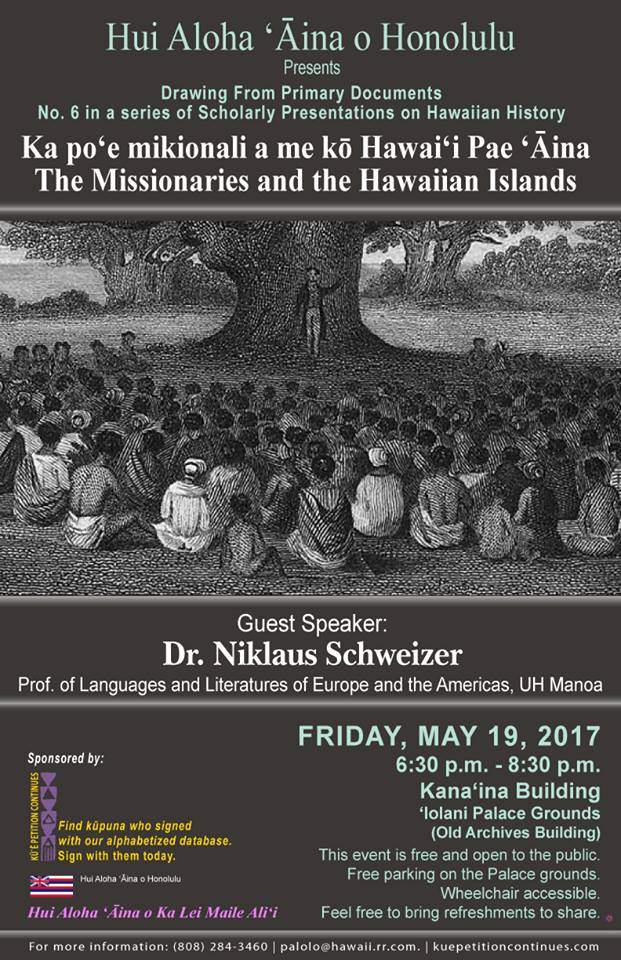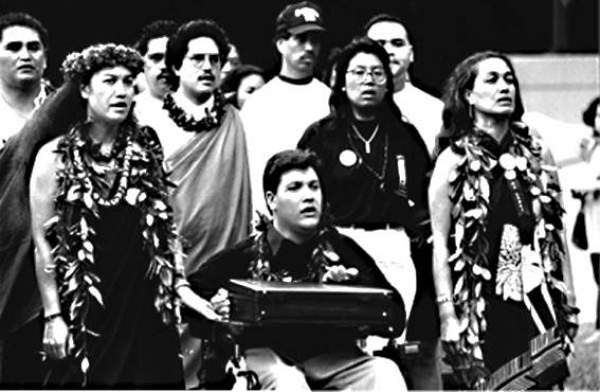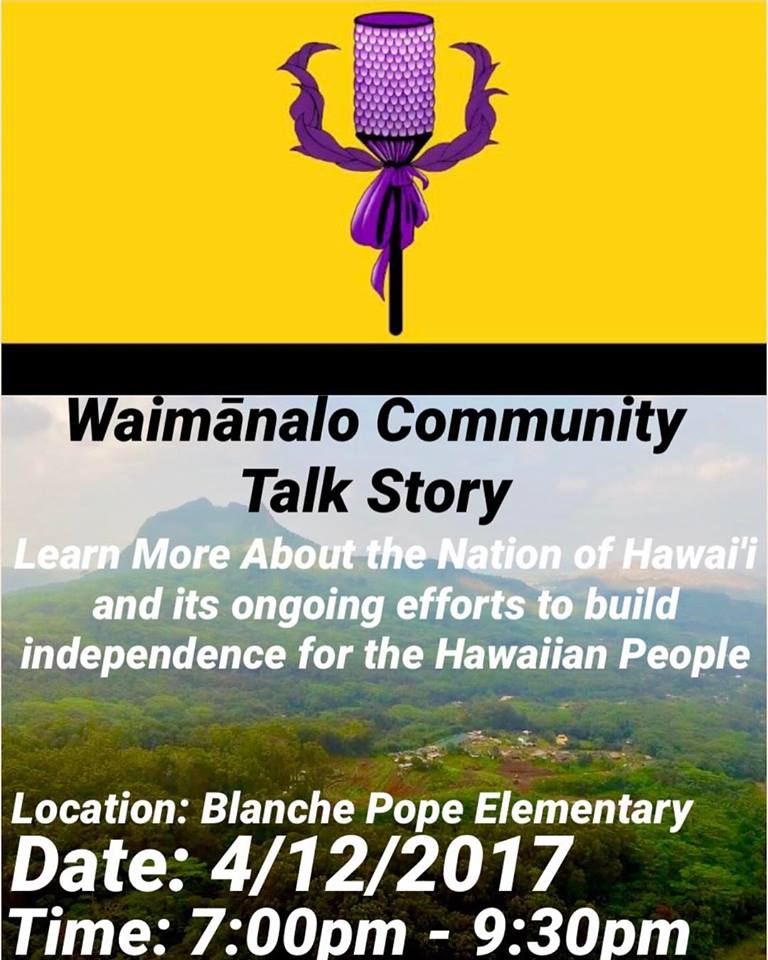Come join Hui Aloha Aina o Honolulu members and guests on Friday, May 19, 6:30 pm, for a presentation by Prof. Niklaus Schweizer on your (and my) favorite (sometimes controversial!) topic of the missionaries and the Hawaiian islands. The event is at the Kanaina Bldg. on the grounds of Iolani Palace. It’s free and open to the public. Parking on the palace grounds. Wheelchair accessible. If you’d like to bring refreshments to share, please do! And yes, space is limited.
|
||||||
|
Nation of Hawaii representing International Indian Treaty Council (IITC) at the UN 16th Session of the Permanent Forum on Indigenous Issues.
From Poka Laenui via Facebook: The third general meeting of the Hawaii National Transitional Authority will be held tomorrow 85-888 Farrington Hwy., Wai`anae, HI at the S&L Building. Meeting starts at 6:00 P.M. and will run for 3 hours. In the past two meetings, we began a process of facing these challenges, “peeling the onion, one leaf at a time.” From the adage, “a house divided against itself cannot stand,” we explored the areas of unity among various expressions of Hawaiian sovereignty, from immediate and absolute independence to a process of obtaining Federal recognition, and moving within the U.S. administration, to eventual independence from the U.S. We explored options of working within the U.S. administration and taking over place and positions in preparation for assuming independence. Continue reading Hawaii National Transitional Authority meeting Leon Siu has a piece in the Huffington Post pointing out the hypocrisy of the state of Hawaii challenging Trump’s travel ban in court and intending to declare itself a sanctuary state, while it “has gone overboard in utilizing the cover of U.S. immigration policies to apply the status of ‘undocumented’ to Hawaiian nationals — those Hawaiians living in the Hawaiian Islands and who assert they are subjects of the Hawaiian Kingdom, residing in the Hawaiian Kingdom.”
Hawaiian who stood tall: UH-Hilo hosting free screening of film about educator, activist
The public is invited to the Big Island premiere of the film, “Ku Kanaka: Stand Tall,” about the late Dr. Kanalu Young and the Hawaiian sovereignty movement. The free screening is at 5 p.m. Tuesday at Hale ‘Olelo, Ka Haka ‘Ula O Ke‘elikolani, College of Hawaiian Language, Lumi Pahiahia, University of Hawaii at Hilo. Young was quadriplegic from a diving accident at the age of 15 who learned to heal from his trauma and became a Hawaiian studies professor at the UH-Manoa. An activist and chanter, Young emerged as a leader in the Native Hawaiian struggle for civil rights and helped his people heal from national injustice and embrace their Hawaiian identity. The film screening will be followed by a panel discussion and Q&A. The panel includes: • Marlene Booth, filmmaker and instructor, Academy for Creative Media at UH-Manoa. • Pua Mendonca, educator and Young’s friend.
• Shelbi-Ahlan Shimazu, UH-Hilo student. • Dr. Jonathan Kay Kamakawiwo‘ole Osorio, a Hilo native and professor and interim dean of the Hawai‘inuiakea School of Hawaiian Knowledge, UH-Manoa. For more information, contact Booth at boothm@hawaii.edu. Check out this very funny satirical tourism ad for Hawaii that shares a lot of truths! From The Juice Media. Brandon and Bumpy share about their experience with Al Jazeera Plus visiting Puuhonua O Waimanalo and telling the story of the land base of the Nation of Hawaii, and talk about blockchain technology among other topics. Three-part series on AJ+ on Hawaiian issues, history and sovereignty, featuring Bumpy Kanahele and the Nation of Hawaii. |
||||||
|
Copyright © 2025 Hawaiian Kingdom Independence Blog - All Rights Reserved Powered by WordPress & Atahualpa |
||||||




